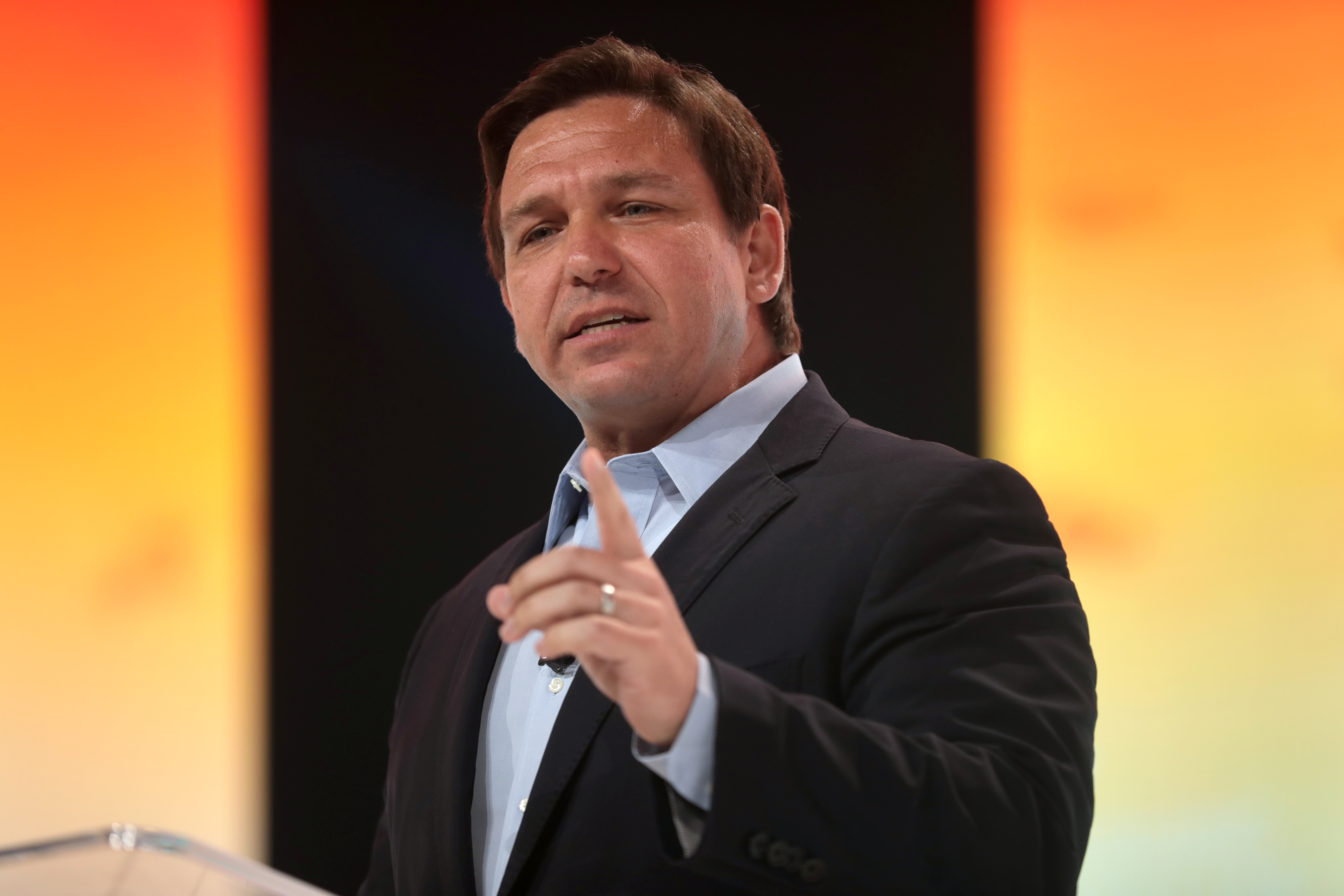A Lurking Threat: State Emergency Powers in Elections
The authority to both define state emergencies and exercise state statutory emergency powers rests almost entirely with America’s governors. When emergencies—real or supposed—and elections intersect, state executives could leverage their emergency powers to influence electoral outcomes.

Published by The Lawfare Institute
in Cooperation With

When American Airlines Flight 11 struck the World Trade Center’s North Tower on September 11, 2001, windows shattered at neighboring 1 World Financial Center, where voters stood in poll lines. It was New York City’s mayoral primary day. Shortly before noon, New York Gov. George E. Pataki issued an executive order, halting the election. In the days after 9/11—and in the face of unimaginable trauma—the election’s postponement was not top of mind. But Pataki’s actions did not go unnoticed. On September 12, 2001, at least one publication asked: “Can judges and governors simply call off elections?”
There is an acute tension between elections and emergencies. Elections are structured transfers of power, shrouded in procedural safeguards and oversight. They epitomize democracy’s participatory core—each ballot carries equal weight. Emergencies are decidedly less egalitarian. They are not foreseeable or easily governed. They carry no clear rulebook. And most critically, they are ill suited to democratic inputs. While elections rely on the voices of many, emergencies often demand centralized decision-making.
When emergencies strike, as Hurricane Ian recently did in Florida, states have typically opted to trade traditional checks and balances for the swift, centralized decision-making of an unconstrained executive. Designed to enable one individual to respond rapidly to unpredictable circumstances, state statutory emergency powers are expansive in scope and largely unchecked in application. In many ways, these powers contradict core tenets of American democracy. They enable executives (generally governors) to exert wide-ranging authority at their own discretion, often without legislative or statutory safeguards. Following Hurricane Ian’s devastation, this dynamic played out in Florida. Drawing on his emergency powers, Republican Gov. Ron DeSantis issued an emergency order that made voting more accessible in three heavily-Republican Florida counties.
In recent years, as concerns about American democracy and the executive branch have grown, presidential power has become a natural focus. Election-related emergency powers wielded at the state level have received far less attention despite occupying a critical junction: These powers are both necessary to preserve the cornerstone of the democratic process in times of crisis and uniquely ripe to undermine democracy through their abuse.
The execution and oversight of federal elections rests primarily with the states, giving immense power to governors, secretaries of state, and other state-level election officials. In the 2020 presidential election, the sheer centrality of these individuals to election administration and the preservation of democracy became acutely evident. Georgia Gov. Brian Kemp and Secretary of State Brad Raffensperger, for example, were bulwarks against presidential incursion on state election results. Yet bulwarks could easily become bridges. When emergencies and elections collide, state executives yield unilateral power in ways that enable them to shape an otherwise democratic process to that process’s safekeeping—or to its detriment.
Two sets of statutes govern the intersection of elections and emergencies—general emergency powers and election-specific emergency powers. Following a declaration of emergency, state laws grant governors sweeping powers—general executive emergency powers—to suspend statutes, issue orders, and alter regulations. For example, Idaho offers a prototypical statute of general executive emergency powers. The state’s governor can both suspend laws that would “prevent, hinder, or delay necessary action in coping with the emergency” and issue orders with the “force and effect of law.” Additionally, all 50 states have statutes—election-specific emergency powers—that prescribe permissible actions when an emergency affects an election. Some of these actions are intuitive—an election board can move a polling place if it is no longer accessible during an emergency—while others are more expansive. In Indiana, for example, the election commission can broadly “adopt emergency rules to administer an election in a way not specified by the election code.” In Florida, the “supervisor of elections” can “establish … an additional polling place,” which may fall outside the original precinct. Louisiana’s secretary of state can “relocate” polling places, and in Ohio the Board of Elections can both move polling places and add new ones. Kentucky’s governor can establish “a different time or place for holding elections,” while Maryland’s governor may “specify alternate voting systems” in an emergency, connoting the discretion to broadly alter voting practices.
Emergencies around elections bring both sets of these powers into play, raising two critical questions: What (legally) counts as an emergency? And who decides that an emergency is taking place?
Natural disasters. Pandemics. Terror attacks. These self-evident emergencies are the ones that legislatures had in mind when they crafted emergency statutes. The attacks of September 11, 2001, Hurricane Katrina, and the coronavirus pandemic all exemplify clear-cut emergencies. More complicated, however, are the situations of lesser urgency and loss that rest on the line between true emergency and mere complexity. Most state emergency statutes do not define “emergency” or do so in such general terms that almost any incident could qualify as an emergency. In Connecticut, for example, “emergency” is defined, but broadly so. Under the state’s statutes, a “serious disaster, enemy attack, sabotage or other hostile action” or the possibility thereof constitutes an emergency. State legislatures’ choice—to opt for ambiguity over precision in defining “emergency”—is a deliberate one. After all, narrowly defining “emergency” would contradict the very purpose of emergency statutes by limiting governors’ ability to respond to the unexpected. Because of this vagueness, a tradeoff exists: ambiguity and gubernatorial discretion or precision and gubernatorial constraint.
In the vast majority of states, governors then broadly decide what constitutes an emergency and if an emergency is taking place. In 43 states, only the governor may declare a state of emergency; in the remaining seven (Nevada, Oklahoma, Missouri, Alabama, North Carolina, West Virginia, New Hampshire), the legislature holds this power too. State emergency statutes, in short, almost uniformly hold that the determination and declaration of an emergency rests with the governor.
Since emergency declarations and the powers that they unlock do not discriminate between self-evident and less-than-evident emergencies, governors’ determinations as to what constitutes an emergency carry significant weight. Could a cyberattack on a voting system be an emergency? What about a covert foreign influence operation targeting an election? The answer, quite simply, depends on gubernatorial discretion.
Once unlocked, the exercise of emergency powers is often here to stay—until a governor decides otherwise. In over a dozen states, there is no limit on a declared emergency’s duration. In other states, like Wyoming, only the governor can terminate an emergency. The interminable potential of an emergency makes emergency powers all the more potent. In March 2020, California Gov. Gavin Newsom declared a state of emergency, citing the coronavirus and his authority under the California Emergency Services Act (CESA). Newsom later leveraged his corresponding emergency powers in an election context. Citing CESA, he issued Executive Order N-64-20, which required local election officials to mail every voter a vote-by-mail ballot regardless of whether they asked for one. Despite persistent efforts from California’s Republican legislators to end California’s state of emergency, it continues today. When asked about the crisis underpinning his emergency powers, Newsom noted that the pandemic was both “endemic” yet had “no end date,” prompting renewed questions about what exactly constitutes an emergency.
While every emergency is different, the law treats them the same. Sweeping emergency powers conceived with epic disasters in mind can be applied to emergencies of lesser proportion, creating an incongruity between the scale of destruction and the executive power granted to remedy it. Governors can, in theory, unilaterally declare emergencies, exercise broad emergency powers for an indefinite period of time, and unilaterally end emergencies. The coronavirus pandemic and the 2020 election did prompt states to reckon with this reality, and at least 20 states have recently considered legislation that would alter existing emergency power statutes. Today, however, general and election-specific emergency powers remain largely unchecked.
While the intersection between emergencies and elections is not a new phenomenon, their juncture has produced a glaring threat: the possibility that a governor could declare an emergency and leverage associated emergency powers to alter electoral outcomes. And as American elections come under real threat from foreign governments and supposed threat from faulty voting machines and voter fraud, it is conceivable that the very “emergency” at issue could be an election’s administration itself. Elements of an election could, in short, be the grounds under which emergency powers are invoked.
At a minimum, governors may deploy their emergency powers to influence discrete portions of the electorate. Just as Gov. DeSantis recently used his emergency powers to improve voter access in selective storm-damaged Republican counties, a governor could subtly shift vote counts by moving polling places, changing election procedures, or altering poll hours. Any one of these actions may seem insignificant. However, in critical precincts or counties, the results of such changes could be enormously influential—not just within a state, but for the national election at large.
Presidential emergency powers are a natural source of intrigue. Emergency powers at the state level, particularly around elections, have not received the same attention—and are a vital addition to the national discourse on democracy.
Editor's note: The author has a forthcoming law review article in the Journal of National Security Law & Policy (Volume 13, Issue 1) on state emergency powers and elections.




.jpeg?sfvrsn=f8ab7a0d_7)
